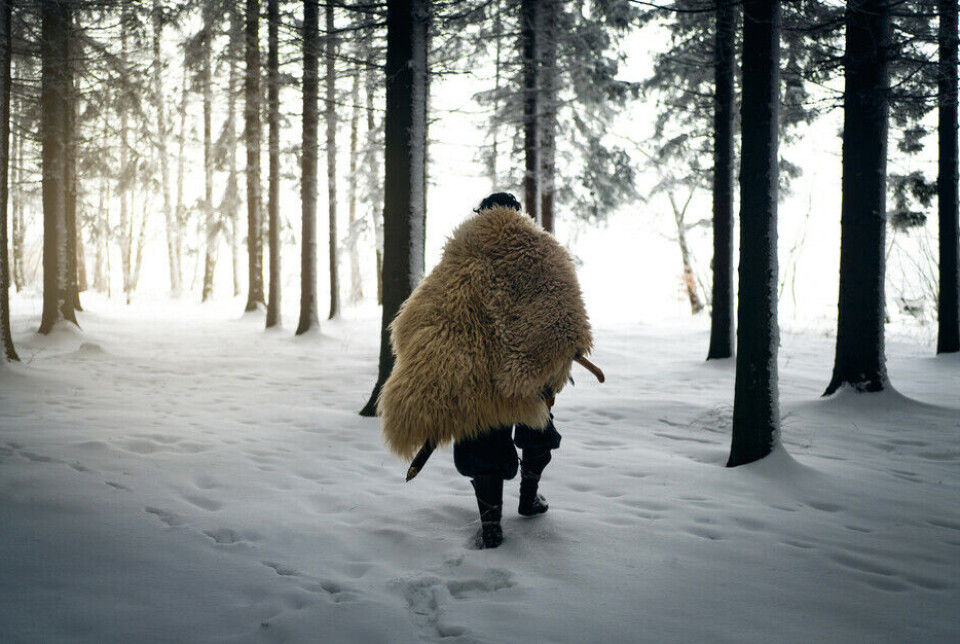THIS CONTENT IS BROUGHT TO YOU BY THE University of Agder - read more

Blood, sacrifice and alcohol: How Christmas was celebrated in the Viking Age
The Christianisation of Norway washed away the most brutal traces of the Vikings' holiday celebrations, but we have retained some festive traditions.
We eat Christmas cookies, watch Christmas films on TV, and indulge in sweets from our Christmas stockings. On Christmas Eve, we open the gifts under the tree, and for Christmas dinner, Norwegians have either cod, roast pork belly, or cured salted lamb ribs.
Before 800 AD, our Norse ancestors observed a somewhat different celebration, one with customs that might have discouraged Santa Claus from visiting.

“The sacrificial ceremonies and communal feasts with ample food and drink were the most important aspects of the Vikings' festivities. There were no Christmas gifts like we have now,” Professor Helje Kringlebotn Sødal at the University of Agder (UiA) says.
Sacrifices to the gods
In other words, the Viking celebration was much less of a children's holiday than our modern Christmas. It lacked the sweet, nostalgic, and cosy elements that many associate with the holiday today.
The word jul as we know it today comes from the Norse word jól, a sacrificial ceremony that took place in winter. It was celebrated sometime between winter solstice in December and mid-January.
The gods received offerings in the form of animal sacrifices, and the Vikings drank to honour their gods and to receive something in return.
“Consecrated beer and meat were the food and drink for jól, and both had rituals associated with them. The Vikings considered the horse a sacred animal, and it was common to sacrifice horse meat,” the professor says.
It was also common to sacrifice pigs, the sacred animal associated with the fertility god Frey. Perhaps our tradition of roast pork belly or pork roast at Christmas is a legacy from pre-Christian times?
Blood on the walls
But when Christianity came to Norway, eating horse meat became prohibited. Such meat was largely associated with the old sacrificial cult.
The sacrificial ceremonies (known as blót) were literally bloody, involving the spattering of sacrificial blood on the walls, on the statues of the gods, and the participants.
“Early Christian sources refer to these rites as indecent,” Sødal says.
Similarities with present day Christmas
Otherwise, jól was primarily a festivity for the home and extended family. It has certain similarities to the modern Norwegian Christmas.
There was a lot of toasting, drinking, and drunkenness. Not unlike the pub visits many people traditionally make on Christmas Day or Boxing Day.
The earliest written source on the Vikings' festive celebrations is about Harald Fairhair in the 900s. Here, the word jól is associated with ‘drinking Yule’, celebrating with drink offerings to the gods.
Ritual drinking, in other words, was an important part of the Vikings' Yule celebration. It was done for the Norse gods to grant them a good year with rich harvests, high fertility, and peace.
Severe punishments
With the transition to the Christian era, the celebration took on a new meaning. The Yule ale the Vikings used to toast the Norse gods was now to be blessed.
“In the Gulating Law, it's stated that the ale on Christmas eve should be blessed in the name of Christ and Saint Mary, in thanks for a good year and peace,” Sødal says.
The new law stated that those who failed to brew Yule ale and consecrate it properly for three years in a row could face the most severe punishment: Being banished from the country and stripped of their home and possessions.
In hindsight, it was wise to adapt old holidays and customs to Christianity instead of abandoning them.
“Those who embraced the new faith did not miss an important celebration; they simply celebrated it differently in accordance with the Christian faith. Even the ale became a ritual drink for Christians as well,” she says.

This content is paid for and presented by the University of Agder
This content is created by the University of Agder's communication staff, who use this platform to communicate science and share results from research with the public. The University of Agder is one of more than 80 owners of ScienceNorway.no. Read more here.
More content from the University of Agder:
-
The law protects the students. What about the teachers?
-
This researcher has helped more economics students pass their maths exams
-
There are many cases of fathers and sons both reaching elite level in football. Why is that?
-
How we used plants to protect ourselves from evil
-
What is it like for nurses to promote health behind bars?
-
This can make life easier for new maths teachers




































